Day 3 - Wednesday 30th March 2016
Leaving Orlando for the time
being and not returning until the very last day of our trip, we were up and out
bright and early again ready for our first port of call for the day – Mead
Botanical Garden.
This fantastic small wildlife oasis nestled just to the north
of Orlando held a number of key species for us that we were unlikely to see
elsewhere, and we had barely left the car when Alex heard the first – Pine
Warbler.
Calling from one of the huge moss draped trees in the picnic area, we
craned our necks in an effort to catch a glimpse of a flash of yellow in the
leaves above. Pinning down the location the calls were emanating from, it
wasn’t long before I’d found our prize – one superb male Pine Warbler making
its way along a thick branch and feeding on the insects in the crevices.
This was another species we weren’t sure whether we would connect with, wintering in Florida and being one of the first species to migrate north.
 |
| Mead Botanical Garden |
 |
| Pine Warbler |
This was another species we weren’t sure whether we would connect with, wintering in Florida and being one of the first species to migrate north.
 |
| Craning our necks to look at the tops of the trees, all we could manage were record shots as the Pine Warbler hopped around the branches |
 |
| This Cooter was the first of many for our trip |
 |
| Barred Owl |
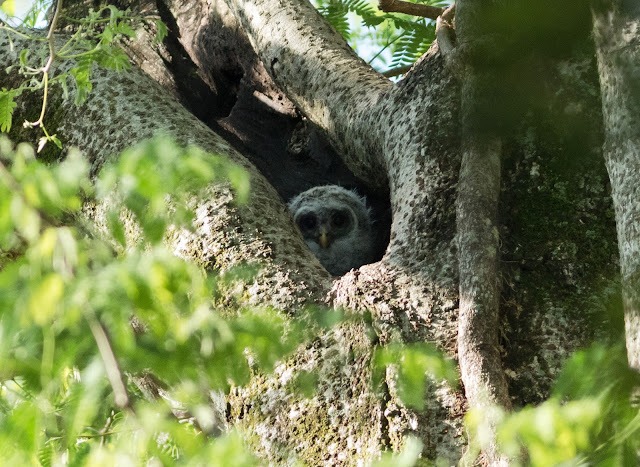 |
| Barred Owl chick! |
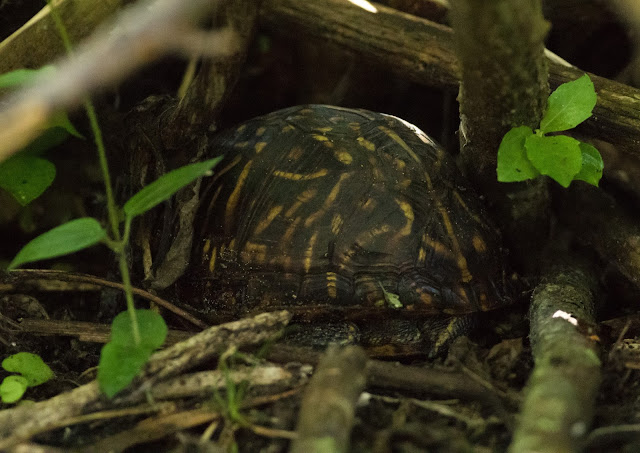 |
| Box Turtle |
 |
| Monarch Butterfly |
Cutting our losses with the
Painted Buntings and tearing myself away from the Monarchs, the clear blue
skies were perfect for raptor watching. Having earlier seen a large female
Sharp-shinned/Cooper’s Hawk fly overhead (again our raptor ID skills failed us
and it was even too quick for our local birder to get a positive ID – although
it was most likely a female Sharp-shinned) we were this time rewarded with a
definite male Sharp-shinned Hawk circling high up in the thermals, similar in size to our
Sparrowhawks and sporting the same orange and grey plumage.
 |
| Sharp-shinned Hawk |
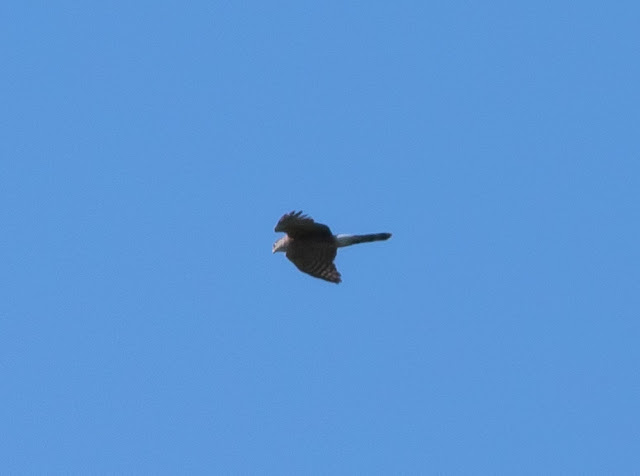 |
| The presumed larger female Sharp-shinned Hawk - the smaller head and wing posture pointed against the bigger still Coopers Hawk |
 |
| Red-shouldered Hawk |
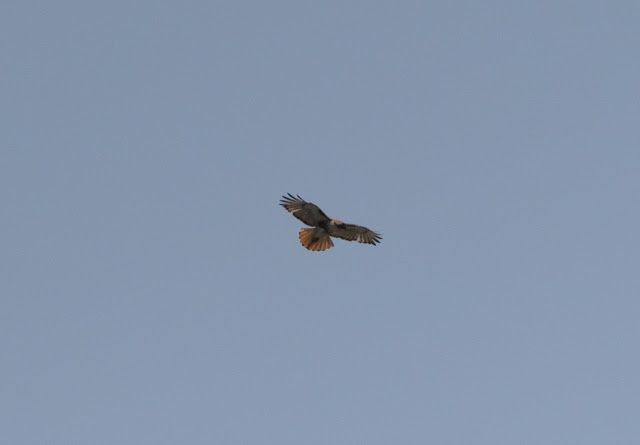 |
| Red-tailed Hawk |
 |
| Male Northern Harrier |
 |
| Immature Bald Eagle |
 |
| Carolina Wren |
Another bird I had been
desperate to see out in the states was Yellow-bellied Sapsucker. Wintering in
Florida, this was yet another species that was now moving on, with few birds
lingering in to April. Luckily, a female had been reported the last few days
here at Mead, but we had so far not come across her. Cue our local American
birder, once again on hand to impart that vital local wisdom. It seems the
female had been favouring a particular tree right at the northern end of the
gardens near Howell Creek, making track marks in the trunk to draw out the sap
and rarely venturing away from the area – indeed our American birder had seen
her just 15 minutes earlier. Leading us along the boardwalk and on to the
bridge where the tree was viewable from it seemed our luck was in – one female
Yellow-bellied Sapsucker resting happily on the trunk.
In scenes reminiscent of
the Central Park Blackburnian Warbler, it took me a good few panicked minutes
to spot it, hidden up amongst the branches right at the top of the tree and
requiring the exact angle to see.
Remarkably, we also saw a second individual in the trees back near the car park at the end of the morning (they’re obviously like buses) this one found by another visiting birder from the UK (who was ecstatic when we informed him there were Barred Owls on view just metres away from where he was standing!)
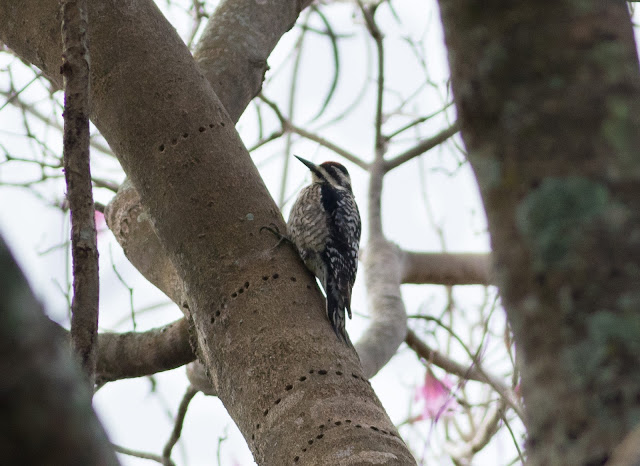 |
| Yellow-bellied Sapsucker |
Remarkably, we also saw a second individual in the trees back near the car park at the end of the morning (they’re obviously like buses) this one found by another visiting birder from the UK (who was ecstatic when we informed him there were Barred Owls on view just metres away from where he was standing!)
 |
| We found Brown Anoles sunning themselves on exposed perches throughout Mead Botanical Garden |
 |
| Great Crested Flycatcher |
 |
| American Goldfinch |
 |
| Palm Warbler |
 |
| Prairie Warbler |
With bright yellow and bold black markings, we encountered a handful of Prairie Warblers during our trip, and we could often hear their high pitched and distinctive trilling emanating from high up in a tree.
 |
| The trees around the car park area at Mead Botanical Garden were particularly rich in bird life |
With bright blue dominating the skyline and with the thermals rising above, the skies were alive with endless numbers of Black Vultures, Turkey Vultures, Red-shouldered Hawks, Wood Storks, White Ibis and Anhingas, all taking advantage of the beautiful weather and soaring along on the air currents.
 |
| Wood Stork |
Confident we would see more and being unable to stop the car on the expressway, we pressed on, counting another distant Kite slightly further along the road. Then, turning off at the junction to take us to Viera we spotted it, a third gorgeous individual, level with the car and circling over the adjacent Burger King car park.
 |
| Swallow-tailed Kite |
With the classic combination of sophisticated pure white and jet black markings framed by the prefect blue of the sunny Florida sky, this was one of my absolute favourite birding experiences of all time, and without doubt the unequivocal highlight of my entire trip. If anyone has never been to Florida or Central America to see Swallow-tailed Kites up close then go – they are amazing.
With our Kite having
disappeared around the corner of the restaurant and seemingly vanishing in to
thin air (it obviously didn’t fancy a burger today) we pressed on for the final
few minutes to Viera Wetlands, a fantastic reserve full to the brim of
confiding wetland species - and alligators. Indeed, we saw several lining the
banks right next to the footpath (one was even munching on an unfortunate
American Coot) but with them mostly resting in the baking hot sun, they didn’t
have the energy to bother us.
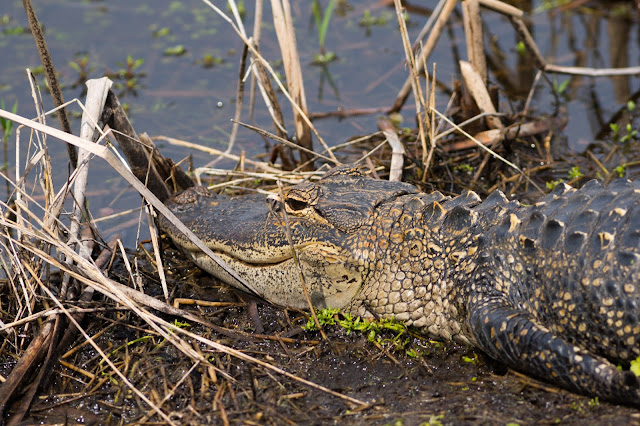 |
| American Alligator |
 |
| Loggerhead Shrike |
 |
| Tricoloured Heron |
 |
| Green Heron |
 |
| Roseate Spoonbill |
 |
| Sandhill Crane |
 |
| Limpkin |
 |
| Portrait of a Limpkin |
 |
| Apple Snails - a Limpkin's favourite food! |
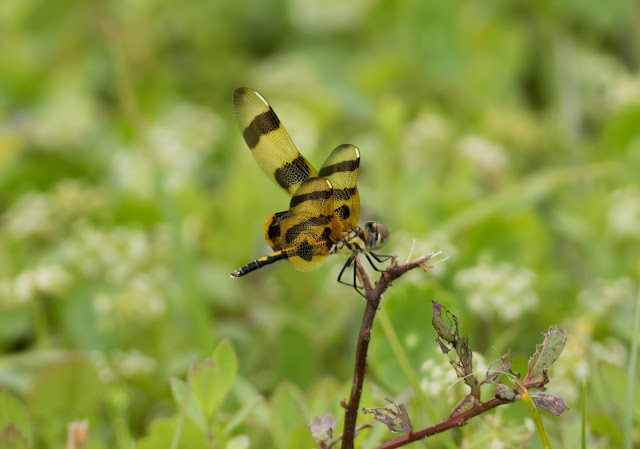 |
| Halloween Pennant |
Deciding to head over to the
Caracara Trail section of the reserve in the pursuit of – you guessed it –
Caracaras, it wasn’t long before Alex had remarkably picked one out – a distant
individual flying across the sky at the other side of the cells and gliding
over the trees. With distinctive black and white wing markings in flight there
was no mistaking a Crested Caracara even at a distance, and luckily we encountered several more
birds that showed much closer during the trip.
With Crested Caracara now in
the bag, we were free to explore the wetlands at leisure. Pied-billed Grebes
bobbed about on the pools, while a pair of Forster’s Terns perched obligingly
on the posts offering great scope views. Several huge Caspian Terns also darted
round the lagoons, their powerful flight and sudden dives no match for any
unsuspecting fish below while Boat-tailed Grackles and Red-winged Blackbirds
darted to and from the reedbeds every few steps. We were also able to get a
better look at the Anhingas – wings outstretched and drying off in the sun –
the dagger like bill much longer and thinner than a cormorants and perfect for impaling
and catching small fish.
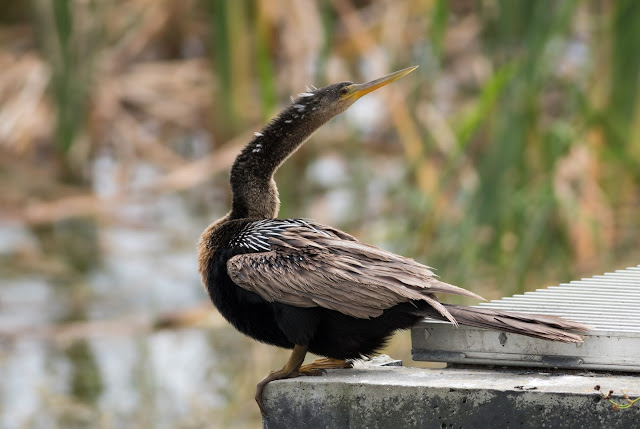 |
| Anhinga |
 |
| American White Ibis |
 |
| Mottled Duck |
 |
| Florida Softshell Turtle |












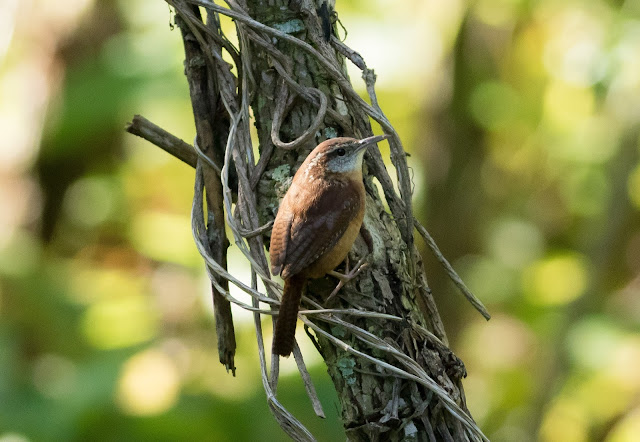
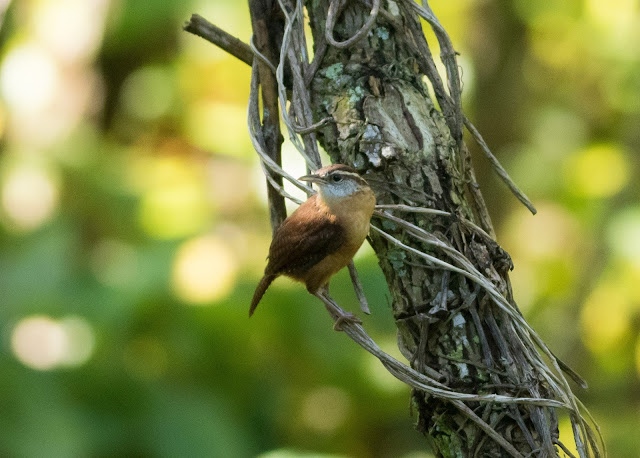
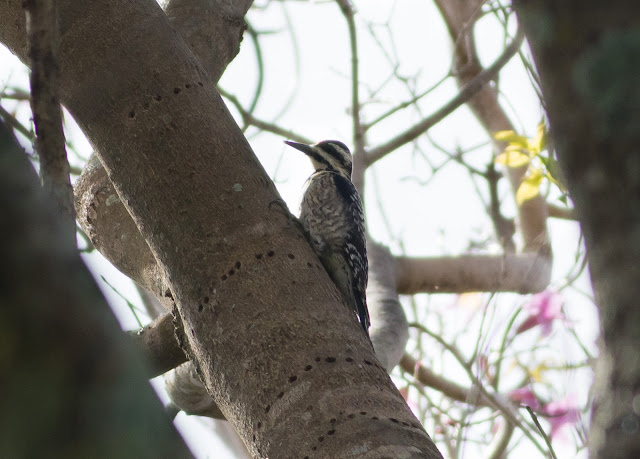




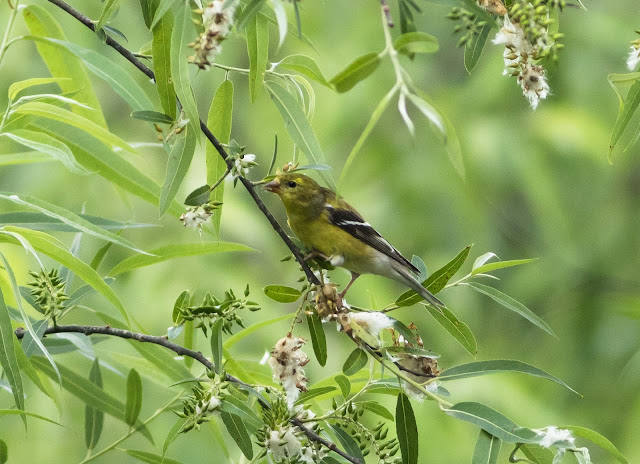


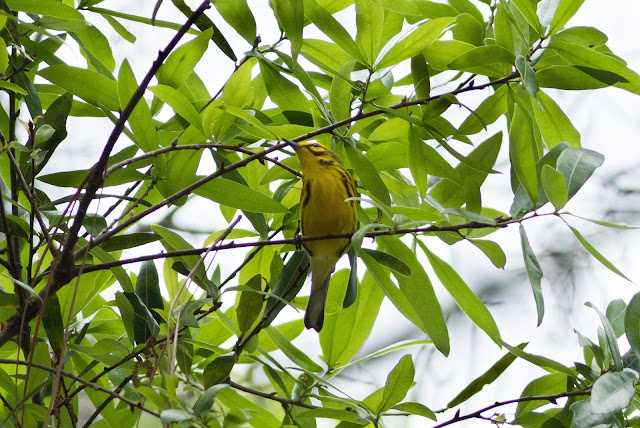





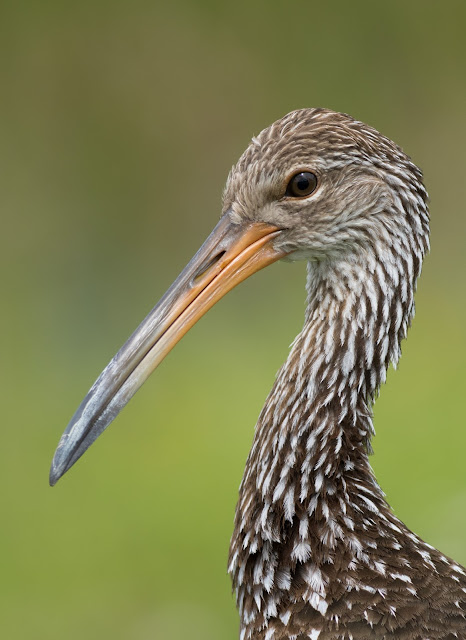







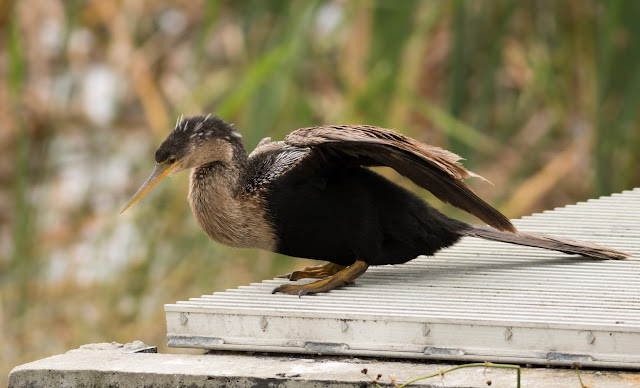






No comments:
Post a Comment